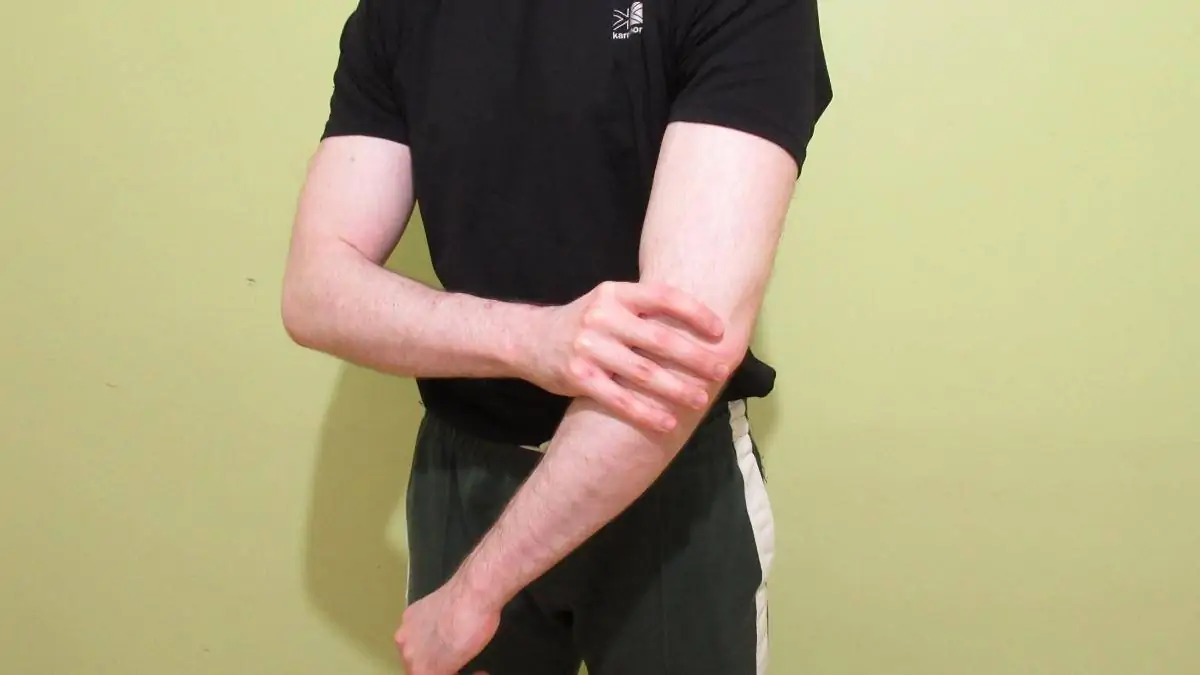There are many different causes of forearm cramping. However, forearm cramps are distinctly different from regular pain because they tend to come in waves and have the sensation of a dull ache (rather than a shooting pain).
Of course, the first port of call when fixing your forearm muscle cramps should be to see a doctor to rule out anything more serious. That said, I’m going to explore some of the common reasons for getting cramps in forearms and hands and also suggest some at-home remedies to reduce your pain.
Related pain posts
What causes forearm cramps?

Forearm cramp can be caused by carpal tunnel syndrome (common if you do a lot of typing), arthritis (common with seniors), fractures due to falls, circulatory problems with your veins, and muscle strains.
This list isn’t exhaustive, but it does cover the main reasons for forearm cramps. Your best bet is to describe the pain to your doctor, who can then perform or refer you for different tests so that you can learn where the pain is actually coming from.
This is crucial.
Because if you have a fracture, for example, then you’re going to need to hold off on the rehabilitation for much longer than someone who has a simple muscle strain from lifting overly heavy weights in the gym.
Forearm cramping symptoms
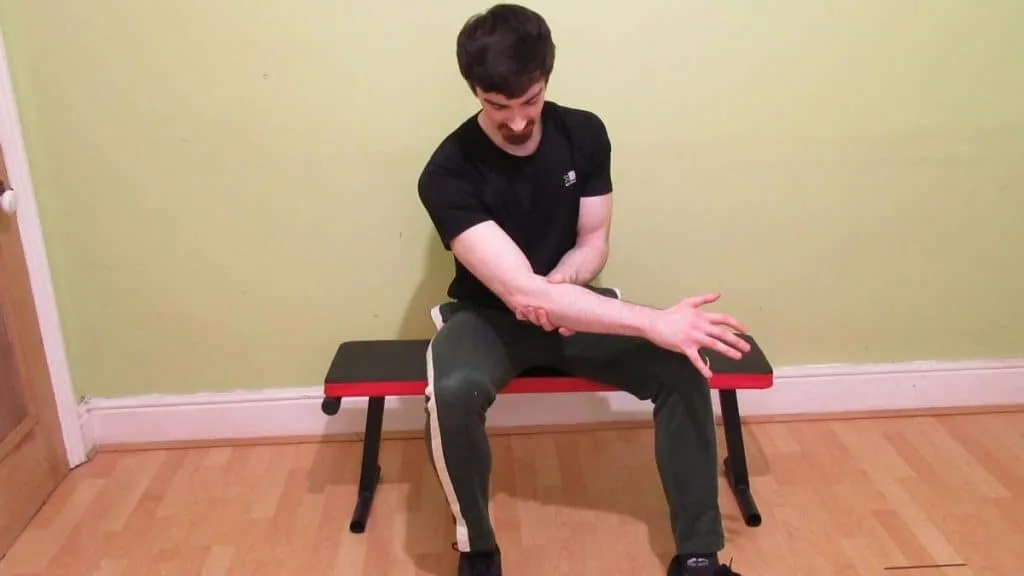
Cramping in forearms generally takes the form of a dull ache that comes and goes. You might feel an unpleasant throbbing or pulsing sensation that’s worsened when your arms are in a fixed position for an extended period of time.
You may also feel more severe symptoms, which can also include swelling and stiffness in and around the wrist or elbow, especially when you lift heavy objects. These symptoms are also common in those who have forearm splints for their gym training.
This is why weight lifters, for example, can sometimes have forearm cramp after a bicep workout. It’s because their flexors are getting strained while in a fixed position. They may also experience pull up forearm pain if they use improper form during compound back exercises, as these movements tend to work the arms a lot.
See our full guide on forearm pain when curling if your problem is weight training-related.
Forearm cramp treatments at home
Specific injuries require personalized treatments. We do our best to give useful evidence-based advice, but for your own health, it’s important to get to the source of the issue. That said, performing a Rest Ice Compression Elevation (RICE) sequence has been known to help many injuries, especially when related to muscular sprains.
Rest
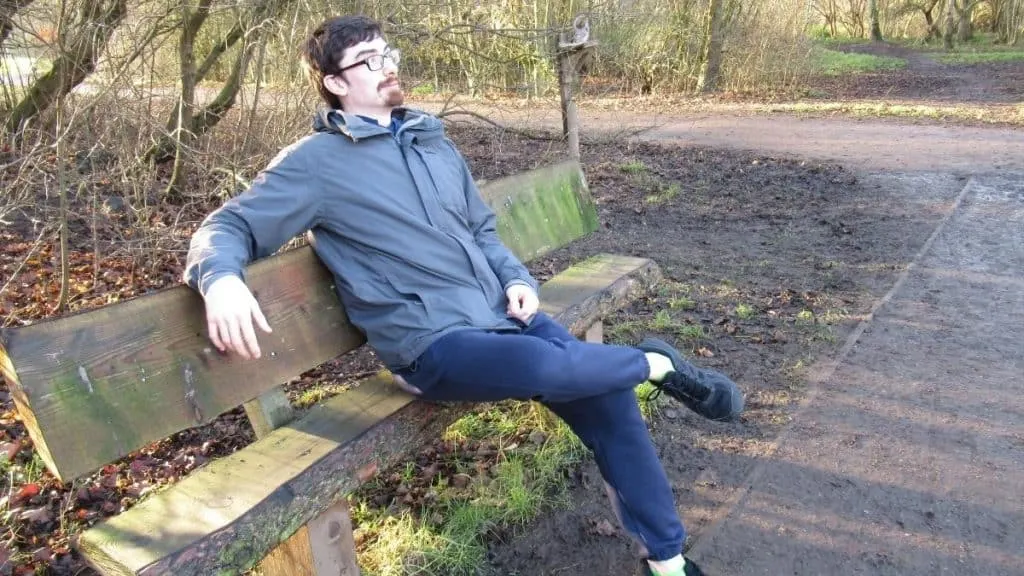
Rest your forearm in a slightly elevated position where possible if you have a forearm strain. Don’t bear too much weight with your lower arms (or your upper arms if you have tricep cramp as well) because this pitfall could easily increase your recovery time or worsen the injury if you try to lift something too heavy.
However, you want to avoid keeping your arms in the same position for extended periods of time. This is because blood can start to pool into your forearms and wrists, which can actually worsen the forearm muscle spasms that you may be experiencing.
Ice
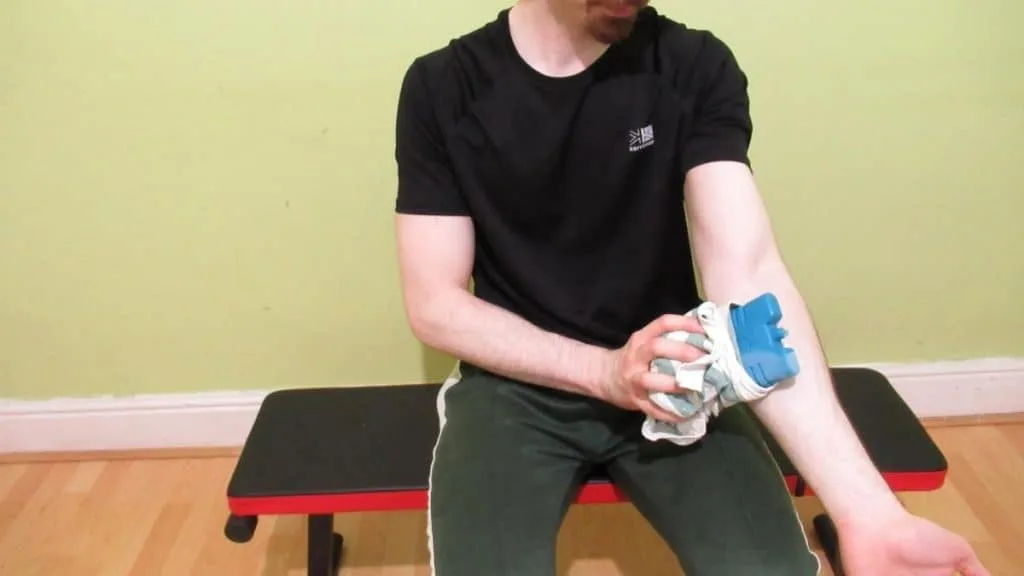
Ice your forearm in the area where it’s cramping the most 1-2 times per hour. Do this while your forearm is in the elevated position described above. An icepack from the freezer is fine for this activity.
And make sure to stay hydrated, too, as this helps the muscles to relax. [1]
Compression
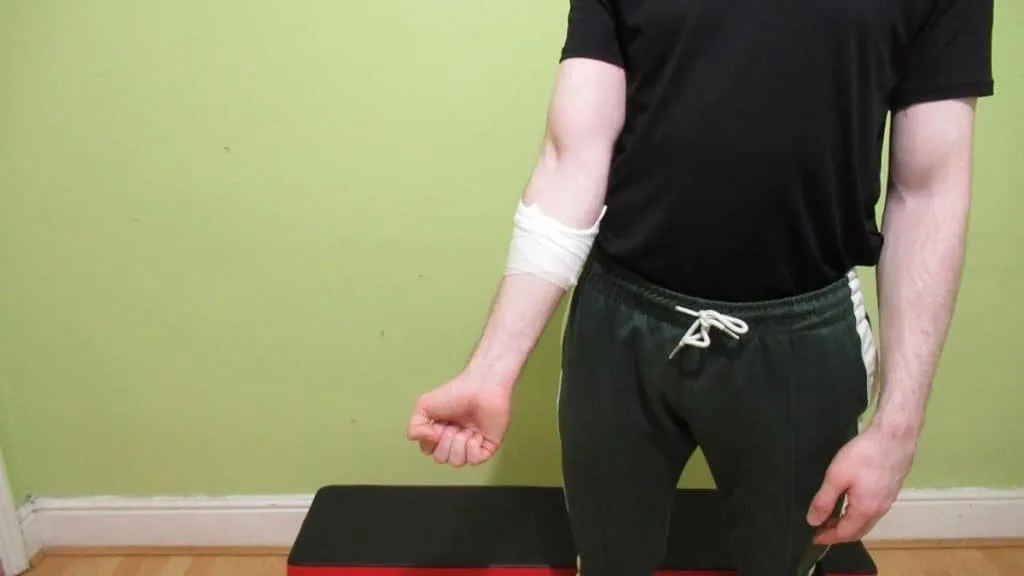
Wearing forearm slings and similar braces can ease your forearm cramping symptoms by promoting optimal blood flow around your limb, which in turn helps to heal damaged tissue faster.
These compression devices are doubly helpful because many products also restrict your lower arm movement, which means that you can’t accidentally apply too much force with it.
Now onto some forearm rehabilitation exercises to build strength and flexibility.
Elevation
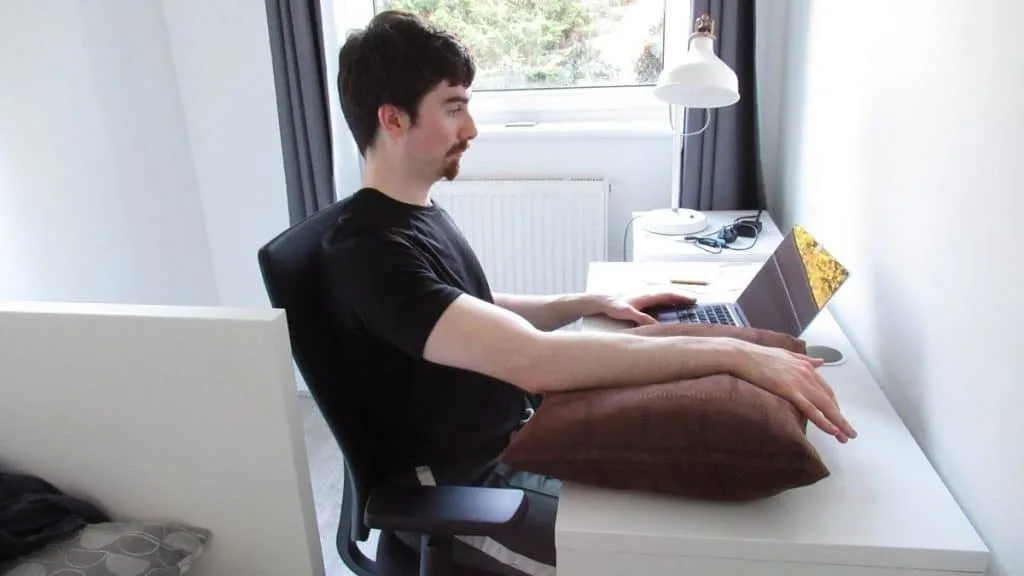
But when you’re not performing stretches, try to keep your lower arm elevated slightly, ideally above your heart, because this position minimizes swelling. You can use the arm of a sofa or put a pillow on the arms of whatever chair you’re sitting in to achieve a more comfortable elevation.
If you’re at work, change the height of your office chair so that it’s not so high up. Your forearm may swell if you perform a lot of repetitive motions like clicking and typing. So ideally, take some time away from the office until your cramp clears up.
Stretches
Forearm cramps are uncomfortable. But if your problem isn’t a serious one, then some simple forearm stretches can go along way to alleviating the discomfort by promoting better blood flow.
You can also try myofascial release for the forearm if you have a foam roller handy, as this can loosen the fascia of the muscle and reduce some of the built up tension that arises from performing repeated concentric motions (like gripping or typing).
Flexor stretch
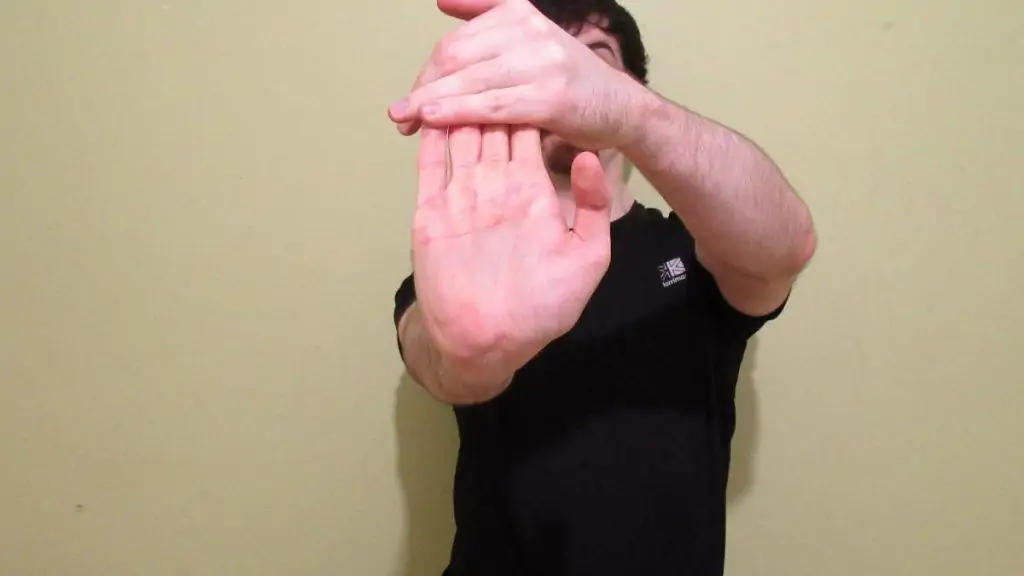
- Sit upright in a chair and place both arms out in front of you, elbows fully extended. You can also do this stretch stood up.
- Raise one of your palms up as if you’re waving at a friend.
- Apply some gentle pressure to the ‘waving hand’ with your other hand until you feel a stretch in the underside of your forearm.
- Be careful not to apply too much pressure. Otherwise, your wrist might feel uncomfortable.
- Hold it for 10-30 seconds and then repeat for your other arm.
Extensor stretch
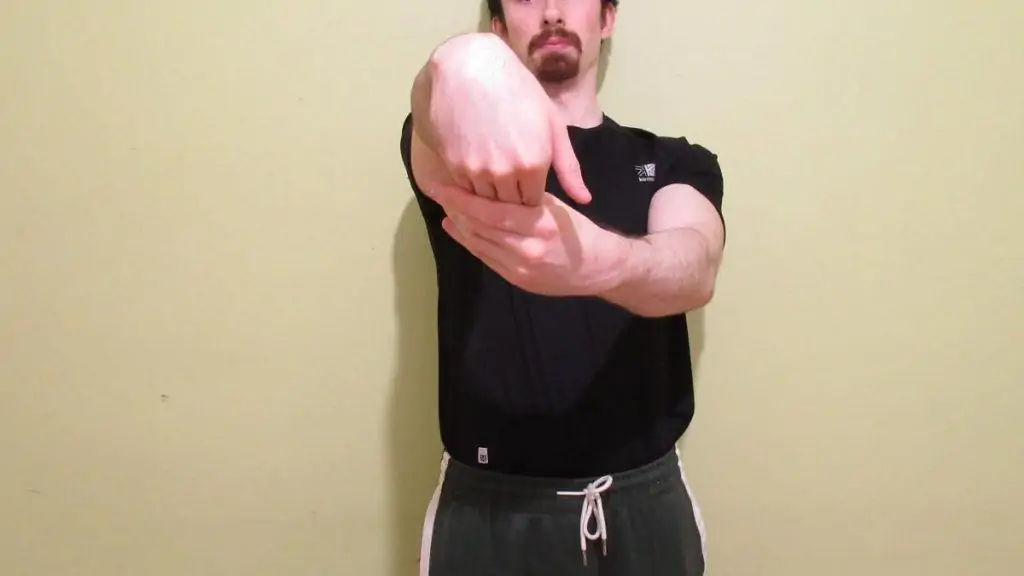
- Stand upright or sit in a chair and then put both arms out in front of your torso.
- Bend the wrist of one hand down and then apply a gentle stretch to it with your other hand by pushing the ‘working hand’ towards your body.
- Hold the stretch for 10-30 seconds, and don’t forget your other arm!
See also
Forearm cramping summary
When I do a lot of computer work, hold a heavy book, or just lazily have my forearms in the same position for hours on end, I sometimes experience forearm cramping. However, when I fix my bad habits (such as not taking breaks from the PC), my forearm cramps decrease dramatically. [2]
I also perform stretches now and again (every day if I use the computer) as a precautionary measure against forearm muscle cramps. Even if the benefit is only psychological, I like to know that these hard-working muscles are getting the attention they need to stay supple.
My biggest piece of advice is to get your cramp checked out if it persists. It’s possible that what you think is a minor forearm cramp could be something worse (or just something different/more specific).
References
- Muscle cramp – Symptoms and causes. (2019, January 3). Mayo Clinic. https://www.mayoclinic.org/diseases-conditions/muscle-cramp/symptoms-causes/syc-20350820
- Higuera, V. (2019, August 27). What Causes Muscle Cramps? Healthline. https://www.healthline.com/health/muscle-cramps
- ACTIV CHIROPRACTIC. (2019, June 8). How To Fix Forearm Pain & Tightness | Wrist Mobility & Stretches [Video]. YouTube. https://www.youtube.com/watch?v=hJ3XICFLxvU

